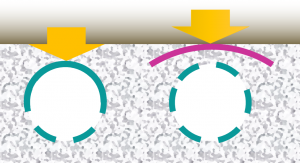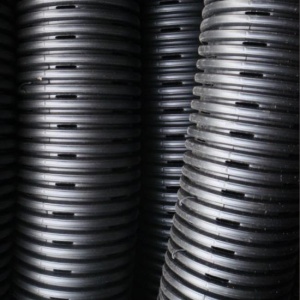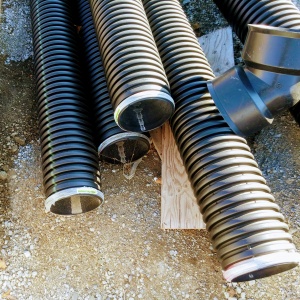Pipes
Revision as of 16:47, 15 July 2020 by Dean Young (talk | contribs)
Perforated pipes are a common component of underdrains, infiltration trenches and exfiltration trenches.
Pipes should have been manufactured in conformity with the latest standards by the Canadian Standards Association (CSA) or ASTM International.
- Perforated pipes should be continuously perforated, smooth interior HDPE (or equivalent material).
- Wherever possible pipes should be ≥ 200 mm internal diameter to reduce potential of freezing and to facilitate inspections and maintenance with a push camera.
- Smooth interior facilitates inspection and maintenance activities; internal corrugations can cause cameras or hydrojetting apparatus to become snagged.
- A perforated pipe with many rectangular slots has better drainage characteristics than a pipe with similar open area provided by fewer circular holes [1].
- Non-perforated pipes should be used for conveyance to and away from the facility, including overflow. It is good practice to extend the non-perforated pipe approximately 300 mm within the reservoir or practice to reduce the potential for native soil migration to clog the pipe at the interface.
See also: Flow through perforated pipe
- ↑ Hazenberg, G., and U. S. Panu (1991), Theoretical analysis of flow rate into perforated drain tubes, Water Resour. Res., 27(7), 1411–1418, doi:10.1029/91WR00779.


